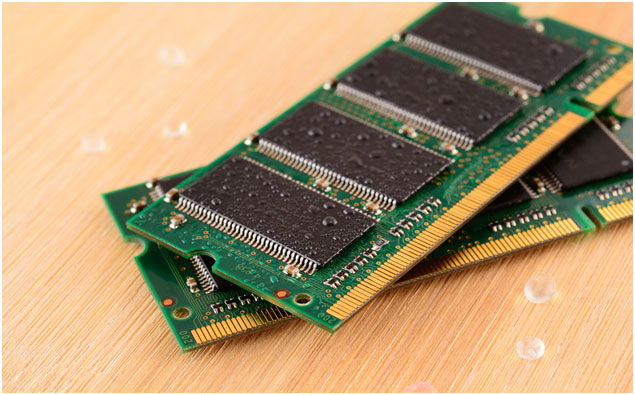 The electronic manufacturing industry of India is one of the largest and fastest growing industries in the world. With an annual turnover of 75 billion dollars, the growth of this market in the country has been exceptional. However, the industry has also witnessed various problems in the manufacturing processes. The manufacturing of electronic devices such as Integrated Circuits, Diodes, hard Disks, Printed Circuit Boards, Transistors, and capacitors require consistent and efficient environmental conditions which are quite challenging to achieve. A study suggests that more than 50% of manufactured electronic devices fail during the production,the reason being corrosion caused due to high moisture.
The electronic manufacturing industry of India is one of the largest and fastest growing industries in the world. With an annual turnover of 75 billion dollars, the growth of this market in the country has been exceptional. However, the industry has also witnessed various problems in the manufacturing processes. The manufacturing of electronic devices such as Integrated Circuits, Diodes, hard Disks, Printed Circuit Boards, Transistors, and capacitors require consistent and efficient environmental conditions which are quite challenging to achieve. A study suggests that more than 50% of manufactured electronic devices fail during the production,the reason being corrosion caused due to high moisture.
Problems in Electronic Devices Due to High Moisture
During production, the products are highly sensitive to the effects of high moisture and climatic changes. Exposure to high humidity during the manufacturing and assembling of these products results in:
- Increase in electrical resistance
- Decrease in capacitance
- Surface defects
- Adhesion failures
- Microscopic corrosion
Due to these issues, the capacity and life expectancy of the circuits and other products gets reduced.
How to Avoid These Problems?
To stop corrosion in electronic devices, the humidity levels must be controlled. Dehumidifiers can be one of the best choices to avoid such problems. By using a dehumidifier during the production and assembling of products, moisture can be adequately controlled, reducing the chances of moisture absorption by the products.
In terms of good quality dehumidifier, India ranks amongst the top countries. However, with the availability of various dehumidifiers in India,production managers face dilemma while opting one that suits their requirement the best.
Parameters to Consider Before Choosing A Dehumidifier
- Size of the Dehumidifier: The most important factor while selecting a dehumidifier is its size. Production managers need to evaluate the size of the dehumidifier that can solve their humidity issues. For a choice of a perfect size of the dehumidifier, these three parameters should always be considered:
- Size of the room: The size of a dehumidifier is directly proportional to the amount of area that needs dehumidification. From process rooms to storage areas, the production and storage in manufacturing industries are in bulk. Therefore, the size of the dehumidifiermust be chosenas per the need. By calculating the cubic meters of the area that needs dehumidification, the correct choice can be made.
- The humidity of the room: More the humidity,the largerthe size of the dehumidifier. Different regions have different humidity levels. The humidity levels in Mumbai are way higher than that of Delhi. Therefore, the size of the dehumidifiers will differ in both the places even if the rooms are of the same
- Airflow: The size of a dehumidifier depends on the amount of air that is being pushed through the equipment. CFM stands for cubic feet per meter and measures the amount of air the dehumidifier can move. Production managers who need to movelarge amount of air through the dehumidifiers can select dehumidifiers whose CFM value is more than 6000.
- Maintenance:Easy maintenance is one of the primary factors to consider before purchasing a dehumidifier. Production managers require equipment that do not require regular maintenance checkups and work efficiently in the longer The desiccant dehumidifiers are the perfect choice because unlike the refrigeration types these dehumidifiers do not use any refrigerants and therefore are easy to maintain and have a longer life-span.
- Moisture Removal Efficiency:Before selecting a dehumidifier, it is important to have an understanding of its working efficiency and energy consumption. The processes in industries run for long hours and a dehumidifier that consumes high energy and provides low efficiency can prove costly to the enterprise.Therefore, organizations must choose a dehumidifier based on its working efficiency, for instance, the dehumidifier which removes more moisture per unit of electricity per kg of air should always be a preferred choice.
- Ease of operation: Production managers should always go for dehumidifiers that are easy to operate. The dehumidifier must have humidistat so that humidity can be controlled Moreover, it must be suitable for long and continuous operations; an auto or manual selector switch also should be available in the dehumidifier. Enterprises must always choose a dehumidifier which can be easily used and has a robust and sturdy structure, to handle wear and tear.
Selection of a dehumidifier is an essential process. A good choice can improve the productivity whereas a lousydecision can deteriorate it. Therefore, production managers must choose a dehumidifier that fits their requirement regardless of its initial cost as it would only increase the revenue generation in the future.






